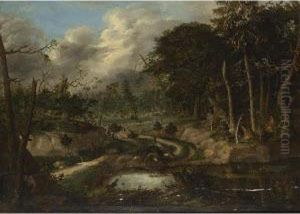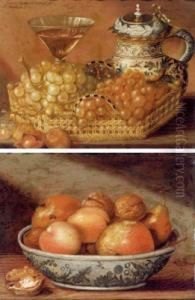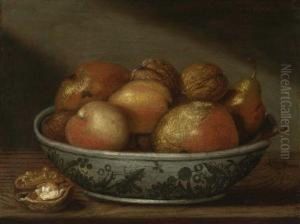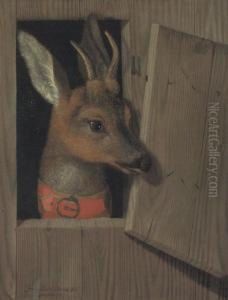Franz Rosel Von Rosenhof Paintings
Franz Werner von Rosenhof, often referred to as Johann Elias Ridinger's teacher, was a notable figure in the world of art, particularly in the Baroque period. Born in 1654, he became an influential artist and engraver, whose works contributed significantly to the European art scene of the 17th and early 18th centuries. Not much is known about his early life, which has led to some confusion, including mix-ups with other artists such as Johann Heinrich Roos, due to similarities in their thematic focus on animal and landscape paintings.
Rosenhof's artistic journey is marked by his contributions to the development of naturalistic and detailed portrayals of animals in their environments. His works often depicted scenes of hunting, pastoral landscapes, and animal studies, which were highly regarded for their precision and dynamic compositions. These pieces not only showcased his mastery in capturing the essence and beauty of nature but also reflected the societal interests and scientific curiosities of his time regarding the natural world.
Throughout his career, Rosenhof was recognized for his ability to blend art and science, a testament to the growing interest in natural history during the Baroque period. His engravings and paintings served as some of the earliest forms of scientific illustration, providing valuable insights into the anatomy and behavior of animals. This aspect of his work significantly influenced his contemporaries and subsequent generations of artists, including Johann Elias Ridinger, who is often celebrated as one of the most prominent animaliers and engravers of the 18th century.
Despite the acclaim his work received during his lifetime, Franz Werner von Rosenhof's contributions have been somewhat overshadowed by those of his pupils and other contemporaries in the centuries that followed. His death in 1733 marked the end of an era in which art served as a bridge between the aesthetic and the scientific. Today, his works are preserved in various collections and museums, offering a glimpse into the Baroque period's fascination with the natural world and its creatures. Rosenhof's legacy, though not as widely recognized as some of his peers, remains an important part of the history of European art, symbolizing the rich intersection between artistic talent and the quest for knowledge about the natural world.



